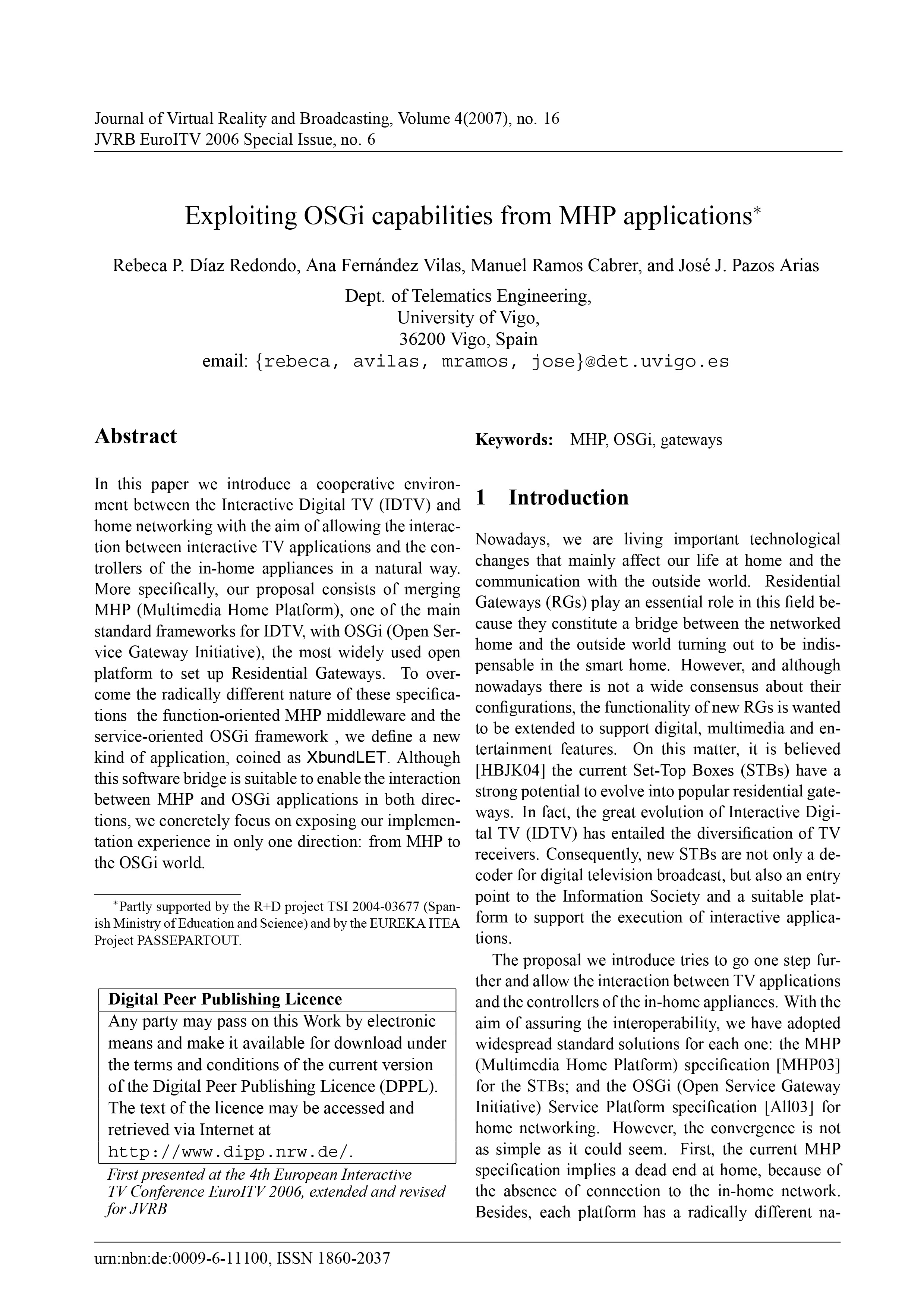Exploiting OSGi capabilities from MHP applications
DOI:
https://doi.org/10.20385/1860-2037/4.2007.16Keywords:
MHP, OSGi, gatewaysAbstract
In this paper we introduce a cooperative environment between the Interactive Digital TV (IDTV) and home networking with the aim of allowing the interaction between interactive TV applications and the controllers of the in-home appliances in a natural way. More specifically, our proposal consists of merging MHP (Multimedia Home Platform), one of the main standard frameworks for IDTV, with OSGi (Open Service Gateway Initiative), the most widely used open platform to set up Residential Gateways. To overcome the radically different nature of these specifications the function-oriented MHP middleware and the service-oriented OSGi framework , we define a new kind of application, coined as XbundLET. Although this software bridge is suitable to enable the interaction between MHP and OSGi applications in both directions, we concretely focus on exposing our implementation experience in only one direction: from MHP to the OSGi world.
Published
2007-07-24
Issue
Section
EuroITV 2006





